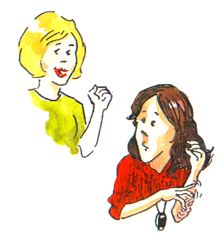Key elements in habit reversal for chronic atopic eczema

The Combined Approach for chronic atopic eczema includes the behaviour modification technique habit reversal for habitual scratching. This is the cause of the skin thickening, or lichenification, that can be linked poor treatment outcome, and frequent relapses.
Here are six key elements for success for this use of habit reversal.
- Understanding the problem
Regular friction causes skin thickening, or lichenification. The skin then is more likely to be dry, and is relatively more sensitive and unstable, compared with healthy skin. Scratching the skin easily becomes an automatic and therefore unconscious habit. It is then triggered not only by itch, but also by circumstances.
- Motivation: achieving an improved Quality of Life
Wanting to change habitual behaviour is an important factor: without it, success is less likely. Moving from “living with eczema” to “living without eczema” is a key concept - being able to achieve an improved Quality of Life motivates most who use The Combined Approach successfully.
- Self-tracking: Hand Tally Counter
Habits are automatic behaviours performed without thinking. To change them they need to be made conscious. A hand tally counter is used in The Combined Approach to do this. Once this is achieved how much of scratching is not itch related becomes clear. After that, as the programme continues, continuing to use the tally counter monitors progress, as frequency of scratching falls dramatically.
- Understanding role of scratching circumstances
The obvious stimulus for scratching with atopic eczema is itch. However, when scratching becomes a habit, the stimuli increase and the context will include a range of times, circumstances and activities. Knowing about this means the treatment plan can be tailor-made.
- The behavioural prescription, aka “implementation intentions”
Understanding how to use “off-the-peg” habit reversal tactics is important, but adding new ideas, based on simple behavioural change principles, is invaluable: such implementation intentions need spelling out. Working out what can be changed for the time being reduces scratching immediately, if important changes are possible. Otherwise, introducing skin-safe behaviours for danger times makes an important difference for most people. We call this “a behavioural prescription”.
- Support
Not everyone is the same: some do best getting on with changing behaviour on their own. Others find it easier to involve others. This may involve the difference between the self-help and the clinic-based approach. Not always, but it can be also useful to recruit support from family and friends.
SEE NEXT
- Essentials for habit reversal success
- Ten Tips for Successful Clicking
- Scratching Context Assessment
- Focused habit reversal
- Ten tips for success using The Combined Approach to atopic eczema
- Why some practitioners fail with habit reversal for chronic atopic eczema
- Behavioural prescriptions for atopic eczema
